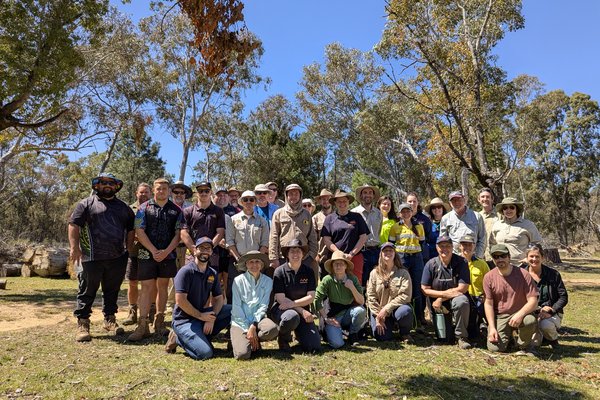National Reserve Biodiversity Survey
Scientists and volunteers, with support from government and business, joined forces to undertake a species discovery survey of the Charles Darwin Reserve in Western Australia. Could this type of partnership be a model for the future? The Australian Museum's Dr Dave Britton joined the fieldtrip to find out.

© Australian Museum
Determining the extent of species diversity in the world is an important first step in successfully managing and protecting our natural heritage for the future. However, there are many areas of Australia yet to be surveyed, and scientists estimate that only a quarter of Australia’s flora and fauna has been documented.
Surveying Australia’s biodiversity is an enormous task, so pooling resources is an effective way to get the job done. And that was exactly the approach taken in May 2009 when scientists and volunteers joined forces, with support from the private and public sector, to undertake a targeted, intensive survey of the biodiversity of Charles Darwin Reserve in Western Australia.
The Charles Darwin Reserve is located in the south-west of Western Australia, an area listed by Conservation International as one of 25 International Biodiversity Hotspots in the world. While some groups such as birds and plants have been fairly well documented in the reserve, information about other groups was absent.
The survey participants set out to address these knowledge gaps and to share the survey effort between scientists with different areas of expertise. A botanist worked alongside biologists, and specimens were allocated to relevant experts for identification and description.
Museum entomologist Dr Dave Britton joined the fieldtrip to survey the Lepidoptera (moths and butterflies) and other flying insects, while scientists from other scientific institutions tackled other groups. The survey was greatly assisted by volunteers from BHP Billiton, coordinated by conservation science research group Earthwatch, and Land Rover Australia which kindly supplied vehicles for the study.
‘It’s quite remarkable how much more you can identify in the field with extra sets of eyes’, said Dr Britton.
‘In five days, with the help of the volunteers, we collected more than 8000 insects at a time of year when few insects are active’, he said.
The survey collected almost 250 moth species, of which 40 percent are as yet undescribed. The team also uncovered two species of butterfly not previously seen in the Charles Darwin Reserve.
‘The use of volunteers in this type of survey promotes the value and utility of research and helps the broader community understand just what biodiversity is’, Dr Britton said.
Participants in the Charles Darwin Reserve study
- Bush Heritage Australia (which acquired land for the Charles Darwin Reserve in 2003)
- Chris Darwin (a descendent of Charles Darwin) whose financial support helped Bush Heritage acquire the land
- Earthwatch Institute
- BHP Billiton volunteers
- Land Rover
- Australian Biological Resources Study of the Department of the Environment, Water, Heritage and the Arts
- Terrestrial Ecosystem Research Network
- Western Australian Museum
- Australian Museum
- Western Australian Herbarium
- University of New South Wales










